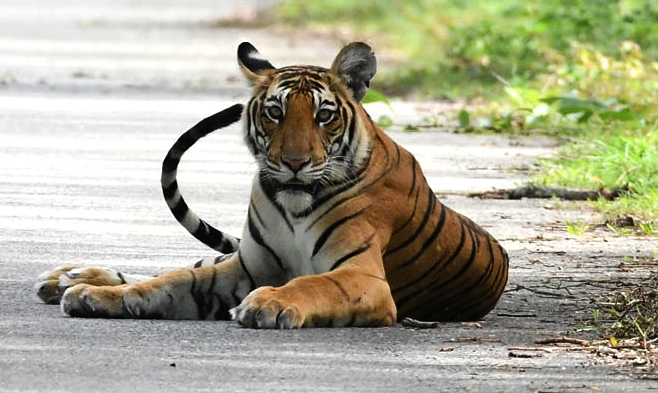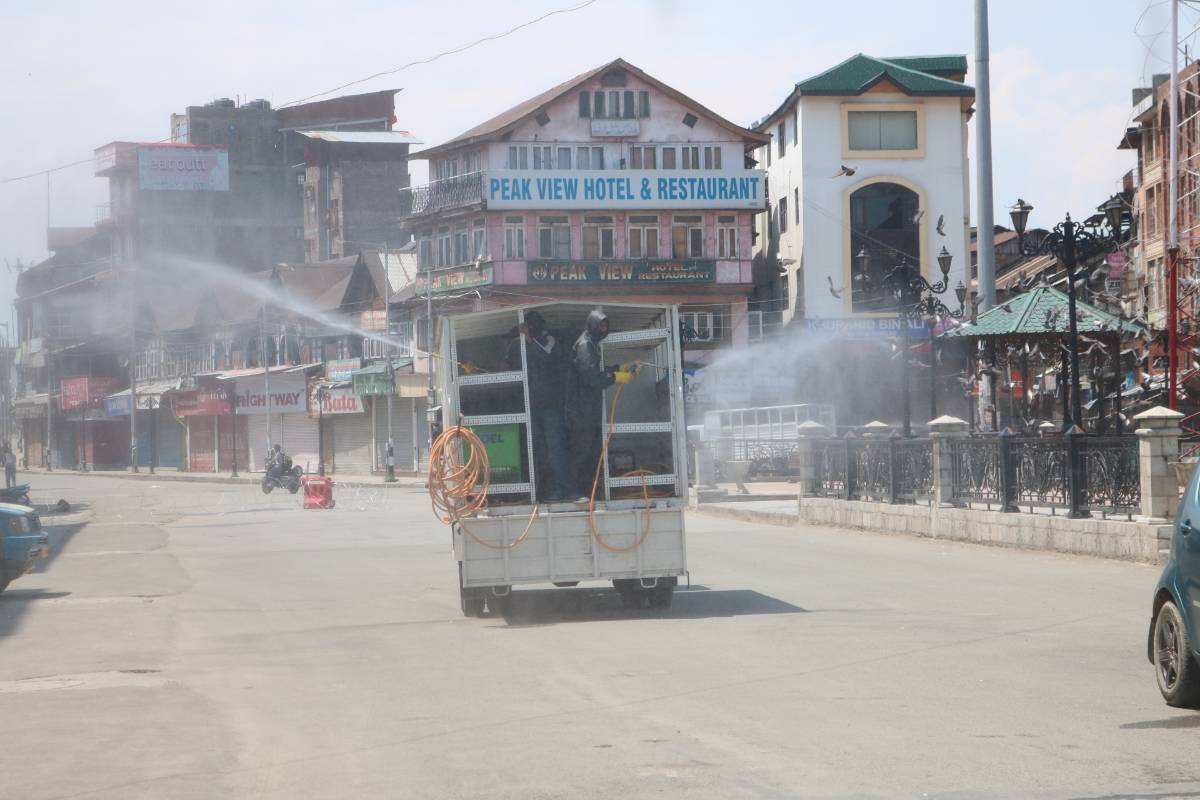The ongoing pandemic has not only affected humans but also impacted all species on Earth; bringing a stronger focus the inextricable human-wildlife connect.
According to the Tiger Census released this week by Union Minister Prakash Javadekar, the country now houses 70 percent of the world’s tiger population. The governments of the 13 tiger range countries have resolved to double the number of tigers by 2022. Notably, the declining tiger population which took place a few years ago has seen a miniscule but welcome upswing recently.
 Malaika Vaz, a National Geographic Explorer and wildlife presenter, says: “My work has taken me to many tiger reserves across the country where I’ve had the chance to spend time up-close with countless tigers. And in each place, I’m always struck by the fact that the tiger as an emblematic, keystone species is able to draw attention to these critical ecosystems that would often otherwise be decimated. The charisma of tigers has led to the protection of vast tracts of forest – that also inevitably protect the smallest of critters from frogs and snakes to lesser-known mammals like caracals, otters and dholes.”
Malaika Vaz, a National Geographic Explorer and wildlife presenter, says: “My work has taken me to many tiger reserves across the country where I’ve had the chance to spend time up-close with countless tigers. And in each place, I’m always struck by the fact that the tiger as an emblematic, keystone species is able to draw attention to these critical ecosystems that would often otherwise be decimated. The charisma of tigers has led to the protection of vast tracts of forest – that also inevitably protect the smallest of critters from frogs and snakes to lesser-known mammals like caracals, otters and dholes.”
Speaking to IANSlife on the impact of COVID-19 on tigers, she notes, “as our society deals with the impacts of the COVID-19 pandemic, nature and habitat is impacted. Given the backdrop of an economy in recession and the shutdown of eco-tourism, there has been a sharp spike in the poaching of wildlife over the last couple of months – and tigers too are more threatened.”
“To me, the tiger is and will always be one of the strongest symbols for India’s incredible natural heritage – on this International Tiger Day, we need to make a concerted effort to champion the protection of this species and the ecosystems they call home,” she added.

Krithi Karanth, National Geographic Explorer and Chief Conservation Scientist, Centre for Wildlife Studies, told IANSlife: “The pandemic has demonstrated our inextricable connections to wildlife and natural habitats and ecosystems. Ongoing destruction of wildlife habitats, poaching and wildlife trade have enhanced thetransmission of zoonotics to people. Our economy is being crippled by this and we must use the time to rebuild resilience to protect wildlife and wild places including our national animal – the tiger.”
Habitat degradation
Livestock grazing, smuggling of timber, hunting and resource extraction by the local populace makes Amarabad Tiger Reserve of Telangana vulnerable to habitat degradation and biodiversity extinction, says report ‘Status of tigers, co-predators and prey in India’.
The 656-page report by the Wildlife Institute of India (WII) was released in New Delhi on Tuesday by Union Forests, Environment and Climate Change Minister, Prakash Javadekar.
The report called for removal of human pressures, especially settlements, from within the Amarabad Tiger Reserve (ATR) and reduction of livestock to improve wildlife and tiger status.
It noted that there has been no change in the number of tiger individuals captured in 2014 from this former part of Nagarjunasagar Srisailam Tiger Reserve.

“629 transects were walked with an effort of 1,241.60 km covering the tiger reserve. Since the number of sightings were too low during these transects, prey density was not estimated,” says the report.
According to the All India Tiger Estimation (AITE) Report of 2018, Telangana is home to 26 tigers. This was the first time the number of tigers in Telangana was officially declared after the formation of the state. There is no comparison data as in 2014 when previous AITE was done, Telangana was part of undivided Andhra Pradesh.
The forest officials, however, estimated that Telangana in 2014 had 20 tigers – 17 in Amrabad and three in Kawal Tiger Reserve.
The core of ATR covers a total area of 2,166.37 km and has a buffer area of 445.02 km. It has low adult tiger density but the large proportion of young tigers (7) in the population is suggestive of improved status and rapid growth in the population, says the report.
The report also noted that Kawal Tiger Reserve does not have a resident population of tigers. “Repopulating this reserve with tigers is only possible through restorative management efforts such as reduction of resource extraction, incentivised voluntary relocation of human habitation, and control of poaching.”

It pointed out that in the last cycle of AITE 2014, no tigers were photo captured in this reserve. 515 transects were walked with an effort of 1,009 km covering the tiger reserve and as sightings were very low, prey density was not estimated.
The report also called for reducing human pressure in Nagarjunasagar Srisailam Tiger Reserve in Andhra Pradesh.
With an area of 3727.82 sq km, the Nagarjunasagar-Srisailam Tiger Reserve Forest is the largest in the country and currently has 60 tigers, the officials informed the Andhra Pradesh Chief Minister Y.S. Jagan Mohan Reddy.
The Chenchu tribes living there are playing a major role in the conservation of tigers and wildlife, which resulted in receiving the National Tiger Conservation Authority Excellence Award in the management of the Forest Reserve, the officials said.
Also Read-COVID May Cause Delirium and Brain Issues









